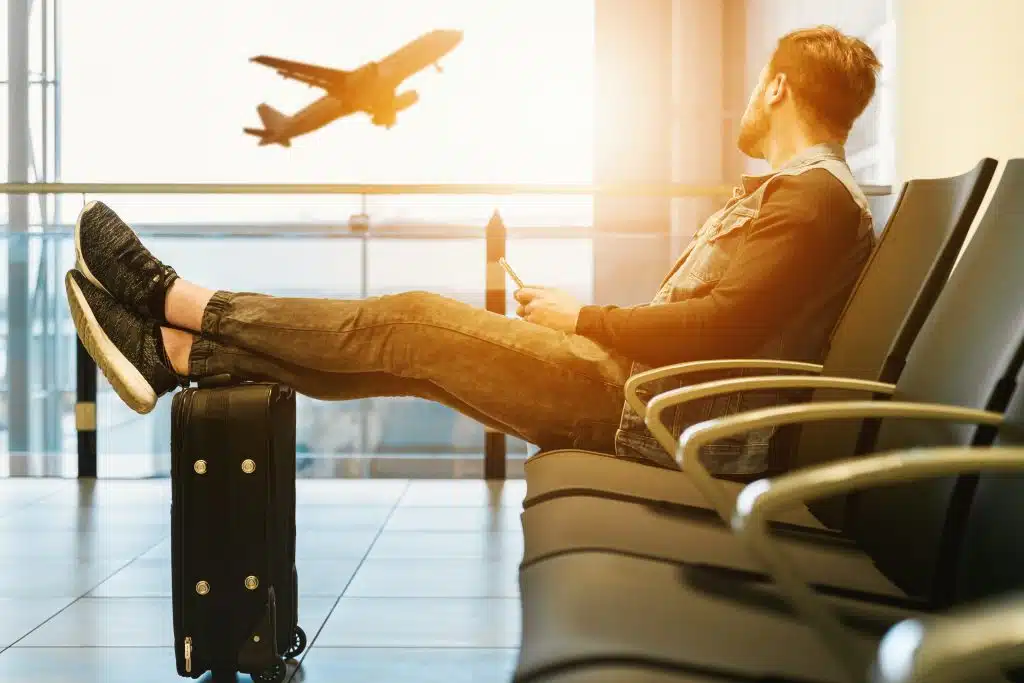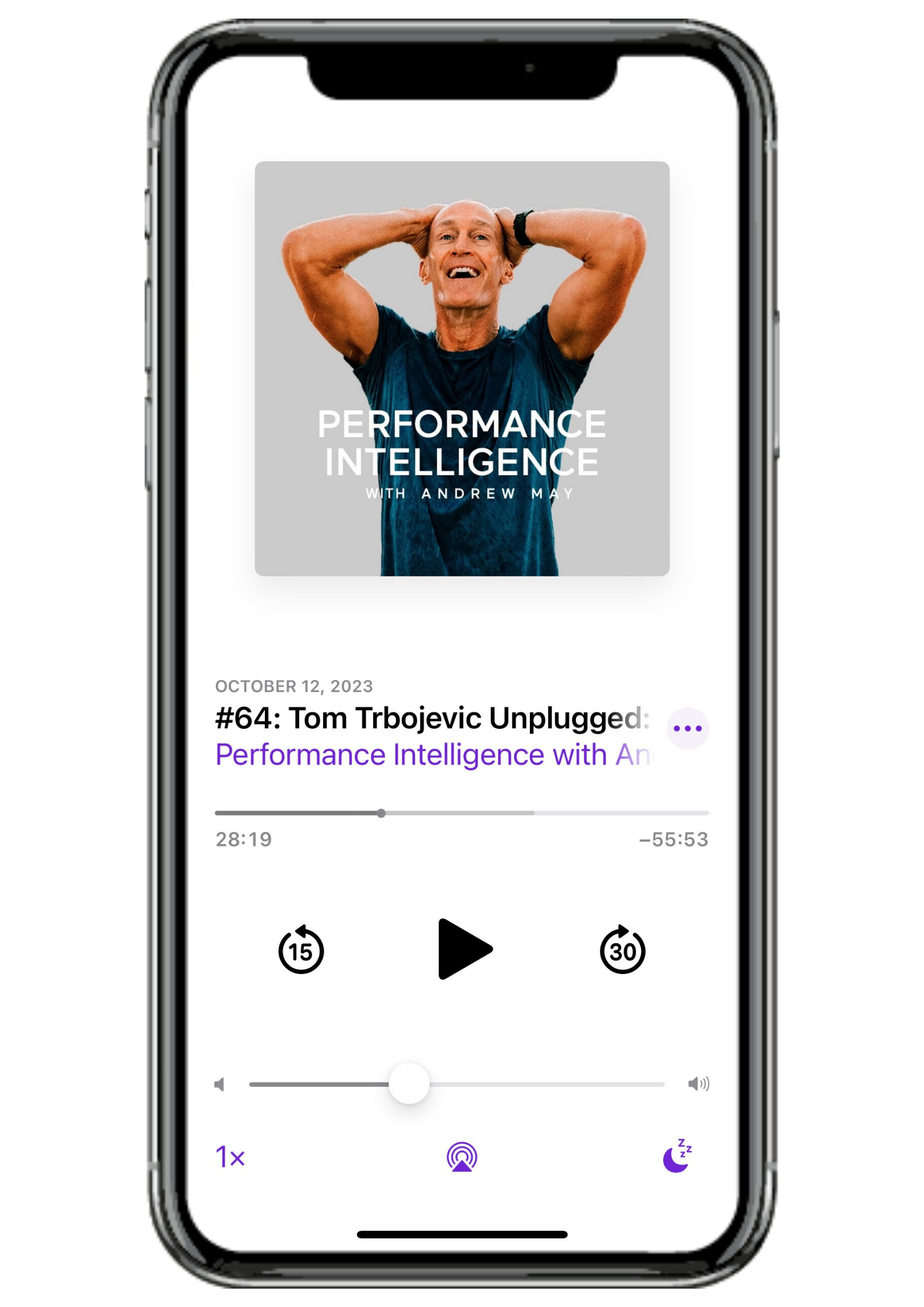Now that borders are open after years of restricted travel, for many people this means jumping onto planes, trains, and automobiles – traversing around the state, country, and globe doing what they do. What often starts out as an exciting adventure exploring new places and cultures can quickly become tedious and draining, especially when not managed properly. If you are a regular traveler, it is imperative to have a travel strategy in place. Otherwise fatigue, and at the very extreme, burnout, can be the end result.
Considering the importance of meetings, presentations, and relationship building when you are on the road – doesn’t it make absolute sense to keep yourself in the best possible condition so you can perform to the best of your ability? Send travel fatigue packing by adopting strategies used by high performance athletes and stay fit and healthy on the road.
My experience with corporate travel
A number of years ago, I was running an international fitness consultancy traveling to conferences and working with fitness institutions around the world. In an average year I would travel overseas 14 times. That is more than 1 international trip a month. I started to feel tired and fatigued from the extensive travel, regularly jumping off a plane and walking through my front door feeling like I had been slapped in the face with a wet fish. If you’re a regular traveler I’m sure you know the feeling.
Not long after I worked as the Physical Performance Manager for the Australian Cricket team, traipsing the world ensuring team members were training and just as importantly, recovering properly to ensure they sustained performance levels in the busy international cricketing calendar. I needed to perform at my best on these trips to ensure the team were performing at theirs. During my tenure, I created a work travel survival plan to minimize my jetlag and fatigue. I have stuck to this plan ever since and find I bounce back a lot better after lengthy periods on the road when I stick to the basic principles, underpinned by the Science of High Performance.
Today, I travel around the world delivering keynotes and coaching high level executives, professional athletes, and sports teams. “Conference season” lasts 3-4 months and I find myself boarding a plane 4-6 times a week. A well thought our travel plan helps minimize fatigue and keeps you fresh on the road. Before giving you specific tips to stay energized on the road, let’s explore the two different types of travel fatigue.
Types of Travel Fatigue
#1 Jet lag
Jet lag is caused by the stresses associated with ‘Transmeridian travel’, or travel across multiple time zones. The human body is set to a natural sleep/wake cycle that takes its cues from the sun. This cycle is commonly referred to as circadian rhythm. The term ‘circadian’ is derived from the Latin word ‘circa’ meaning around and ‘dies’ meaning day, together literally meaning ‘around the day’. The circadian rhythm represents the endogenous (that is, internal to our body) fluctuations in body functions that occur within a 24 hour cycle – aka our ‘body clock’.
From a physiological perspective, our bodies are not designed to travel across multiple time zones in a short period of time. In years gone by, a sailing voyage across the Pacific or the Atlantic would take weeks, if not months. This prolonged journey would allow our internal timekeepers to adjust naturally as the trip progressed.
In the modern era of corporate jets and global connectivity we shoot across multiple time zones in a matter of hours. This confuses our internal body clock and long-haul travel, especially across three or four time zones, results in physiological and psychological fatigue. On average it takes one day for each time zone traversed for symptoms to totally disappear. 2 It takes longer to adjust going eastwards compared with westward travel.
Typical symptoms include feelings of fatigue and inertia, difficulties in concentrating and sleeping, gastrointestinal problems, and a general malaise. Byproducts of this fatigue include stress and anxiety, lack of energy and potential weight gain, reduced cognitive capacity and impaired memory, relationship stress and at the very extreme level job burnout.
#2 Generic Travel Fatigue
Generic travel fatigue is distinct from jet lag and is associated with tiredness after the hassles of a corporate travel, and normally travel which occurs after flying north or south. This is common for corporate workers who travel a lot domestically, or within the same or similar time zones. You might think you’re not getting travel fatigue initially because you don’t have the immediate sensation of being out of whack with your body clock. Generic travel fatigue is more insidious. It tends to creep up on people after years of travel combining lack of rest and recovery with over-stretched diaries on the road, crammed back-to-back meetings or presentations, late nights of ‘corporate hospitality’ involving too much alcohol and copious amounts of unhealthy food. Sounding familiar?
Oh, and add to this lack of physical activity due to decreased energy levels and overall fatigue, which often leads to an increase in weight and further reduction in energy levels. There is nowhere near as much information published on generic travel fatigue compared to jet lag, but I think it is actually a far more pervasive type of fatigue that has serious consequences on people’s health and wellbeing if not managed properly.
Your Work Travel Survival Plan
Before your flight
- Be in bed by 10pm. Try to avoid breaking your normal routine by staying up late and thinking you will catch up on the flight.
- If you’re catching an evening flight, have a 2-hour afternoon nap.
- Schedule the quickest and most direct flight possible. While a stopover will help break up the trip, if you want to maximize your time at your destination, fly as direct as possible.
- Schedule flights to arrive in the morning local time, if possible. If flying to London, aim to arrive around 6 am. That way you will have maximum exposure to light during the day and adapting to local time will be much easier. However, if you’re traveling east rather than west, aim to arrive in the evening, avoiding your exposure to sunlight on arrival as much as possible and trying to get to bed close to your normal time.
During your flight
- Set your watch to the new destination time as soon as possible. Psychologically, you want to be thinking ‘destination time’ the minute you board the plane. For a very short trip, keep your watch on home time for scheduling sleep and meals. This works well if you live on the east coast of Australia and you travel to Perth for a few days, or vice versa.
- Avoid caffeine and alcohol and opt for water or juice. Dehydration makes jet lag worse.
- If prescribed, consider a short-acting sleeping pill for the second leg of long-haul trips, best taken 8-9 hours from your destination so you are waking up a few hours before arrival.
On arrival at destination
- Stay in the sunlight as much as possible (especially in the late morning). Don’t overdo sunlight in the early morning (6am–9 am) or you won’t make it to 6pm. Again, if you are travelling east rather than west, avoid exposure to sunlight late in the day to maximize your chances of getting into a normal sleep/wake cycle.
- Try not to nap after 3 pm if you are planning to get to sleep by 10 pm. Only give in to short naps in the daytime if necessary.
- Exercise only in the first half of the day – definitely not close to nighttime. A brisk walk is the preferred exercise later in the morning or early afternoon.
- Avoid caffeine after 12pm to allow your body every chance of sleeping the first night.
- Try not to clock-watch all day but allow yourself to become immersed with the environment you are in. That way you are less likely to be focusing on sleep all day.
- Sleep at local nighttime and whatever happens, get up promptly the next morning, local time. It’s normal to find that fatigue will catch up with you by day 3-4 so when it finally does, recognize that you are fatigued. It’s okay to schedule a timed 2-hour sleep during the day , but make sure you keep your night sleeps on schedule.
- If possible, don’t schedule important or physically demanding tasks for the first few days. It’s during these first days you are most likely to get sick, so allow your body time to recover and rejuvenate.
Minimize Generic Travel Fatigue
Sporting teams including the Australian Cricket team, Wallabies, and the Super 14 Rugby Teams have long understood how to minimize the effects of travel fatigue. This is how they do it:
- Planned quality sleep and recovery. Schedule a good 7- 8 hours sleep each night you are on the road and take time out to do regular activities that stimulate relaxation (the parasympathetic nervous system). This includes stretching exercises, deep breathing, meditation, mindfulness activities and listening to relaxing music.
- Reduce ambient noise. Investing in a pair of noise-reducing headphones is one of the best travel investments you will ever make! A proper set of headphones helps to drown out the noise of the engines and other people talking. Quality headphones allow you to lose yourself either watching a movie or listening to your favourite music.
- Eat smaller, thoughtful meals. Just because the business lounge or in-flight menu contains all your favourite meals doesn’t mean you have to consume them in the space of 5 hours. Be disciplined and eat smaller, healthier meals. Remember protein promotes alertness because it contains dopamine and tyrosine. Carbohydrates increase drowsiness because they contain tryptophan which is the precursor for serotonin.
- Hydrate every 60 minutes. Dehydration is one of the biggest challenges for regular travelers. The effects of dehydration include fatigue and reduced concentration. Cabin pressure and air conditioning draws even more water out of your body than normal environments so as a general rule try to drink 500ml of water every 60 to 90 minutes when flying.
- Cut back on alcohol. Reduce the amount of alcohol you consume when you fly. This goes hand in hand with point 3 on healthy eating. More than 1-2 glasses of wine will interrupt your restorative sleep patterns (REM) and make you feel tired when you land.
- Enjoy some sunlight and movement. Physical fitness helps combat the effects of jet lag, increases energy and concentration levels and maintains a healthy weight. Once you arrive at your destination strategic movement and sunlight helps reset your circadian rhythm and align your body and brain with the local time.
- Be grateful. I know this won’t be on most people’s priority list to stay healthy on the road but keep perspective and remember how much of an opportunity you really do have to travel with your job. Would you prefer to be sitting at the same desk, staring at a blank wall doing the same things every day? Remember all of the great places and wonderful people you have met as part of your job. Travel is an opportunity.
Airport Lounge Discipline
I particularly notice male corporate workers that spend a lot of time in airport business lounges fall into one of two camps – fit or fat. There appears to be no in between. Too much food and alcohol yet not enough time getting off your backside and moving results in excessive weight gain over a period of time. This doesn’t have to happen with a little extra planning and discipline.
I’ve never seen anyone in the Qantas Lounge forcing people to eat all of the cheese, party pies and pastries – standing over them saying ‘now drink another 5 beers fat boy or else I’m going to rough you up a bit!’ Sure, have the odd drink or two but corporate travel doesn’t give you an invitation to eat and drink everything offered to you.
Travel Stress Free like George Clooney
I love the movie Up in the Air starring George Clooney. The main character, Ryan Bingham, lives to get through airport security and check-ins in record time. For those of us that do spend weeks, if not months of our lives in airports and on planes, the simple tips really do add up to help save you a lot of time
- Travel light and smart. Invest in the right type of luggage best suited for your needs and wherever possible take a carry on bag to avoid waiting at luggage carousels.
- Early check-in. Avoid lengthy queues and check in online before you get to the airport.
- Work on the hop. With laptops, iPads, and smart phones – make the most of working in airport lounges, at your gate, and long taxi drives to the airport. You will arrive at your destination prepared and able to spare any free time for relaxing or fitness.
- Dose of home. Photos of your partner, kids, pets, and family are a great reminder when you’re feeling tired and fatigued about why you’re putting in the large hours and pushing yourself. Load personal photos onto your laptop and smart phone to give you a dose of home when you’re away.
- Pace yourself. Human beings are not machines, you can’t just hit Control Alt Delete when the system freezes hoping it will reboot. We are designed to work in waves of 90 minutes to 2 hours followed by a 5-to-10-minute recharge break. Remember to pace yourself throughout the day and this will help you sustain energy and avoid crashing at the end of each day’s travel.
- Stimulate the mind. Keep your mind active on the road and listen to music, read books (not just business manuals or board papers), and engage in conversation with people you meet on your travels. You’ll be amazed at what you actually learn about cities and cultures.
- Eat before 8pm. Eating late is one of the biggest challenges when on the road. Where possible try and have your evening meal before 8pm. This will ensure food is well on its way to being digested when you get to bed, and this helps improve the quality of your sleep.
- Pack your fitness gear. Everywhere you go get into the habit of packing your running shoes, training gear, swimmers and goggles. This takes up minimal room in your travel luggage and helps eradicate the excuse of not doing fitness activities while away. Also get into the habit of training early of a morning before the day starts. Yyou might have the best intentions to train at the end of a long day but it’s just not going to happen for most people.
- Relax before bed. Having a nice hot bath, listening to some music, reading non-fiction or even following a yoga routine (Youtube has 100s of free routines) or stretching exercises before you go to bed are proven ways to stimulate the parasympathetic nervous system and help you switch off and go to sleep.
- Rituals and routines. Staying fit and healthy on the road comes down to rituals and routines as much as anything. I find if I exercise on the first morning of a long trip away, I tend to exercise for the rest of the trip and I have set myself up in a good routine.
Andrew May





